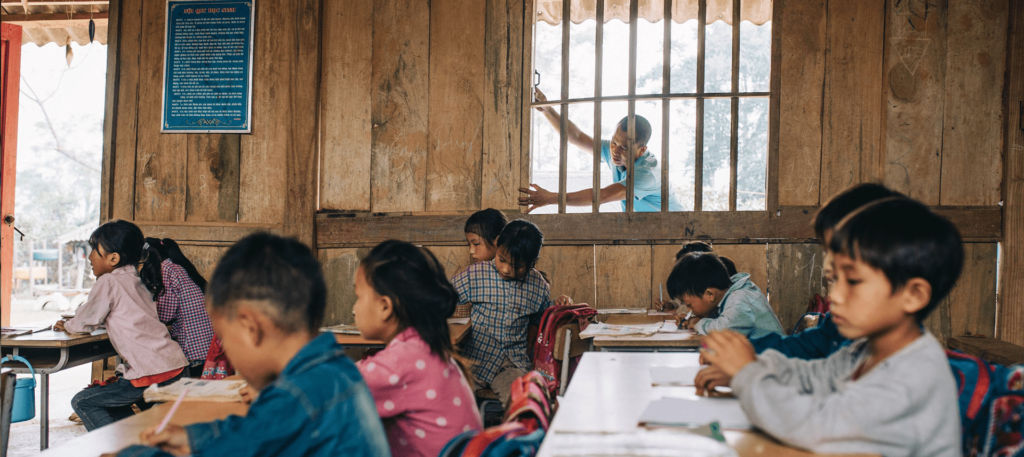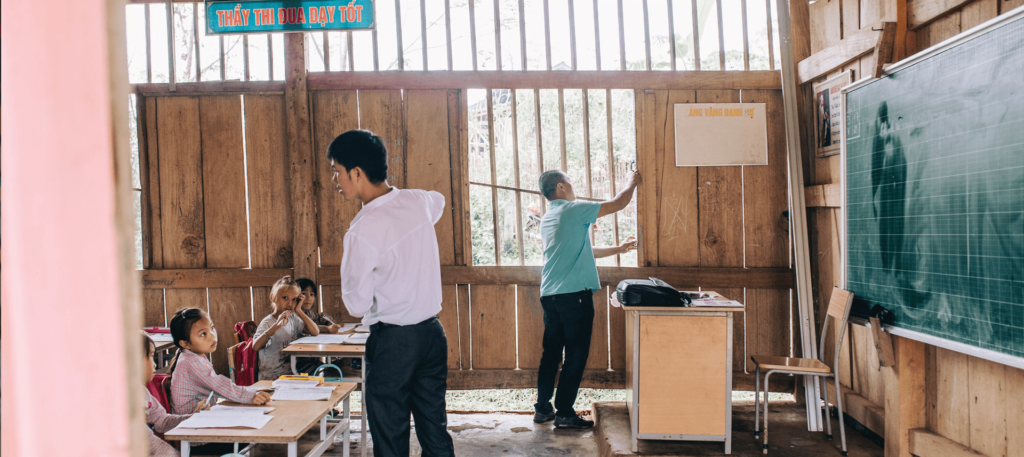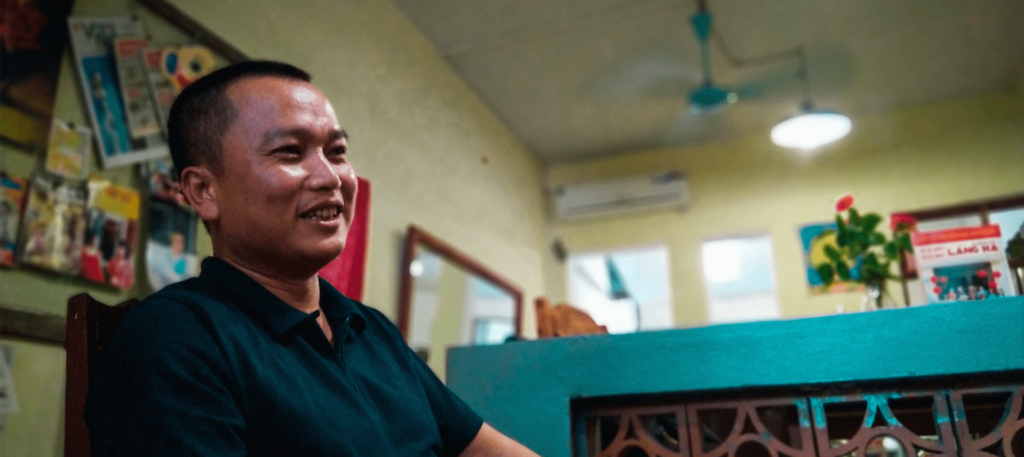“It’s hard to reach, so the community is disconnected from the outside world. They live in poor conditions, they’re often very sick, they’re usually just trying to make ends meet. They never think about how their children can get an education.”
Pham Dinh Quy – make a change for the future of mountainous children
Pham Dinh Quy has made a name for himself as the construction engineer who brought education to the mountains. Following the downfall of his affluent construction company, Quy has gone on to change thousands of lives for young people, constructing schools in underprivileged communities. Quy recalls a story from Nam Luong school, located in a small village in Ha Giang, covered in cornfields, the only way of reaching it was through 8km of treacherous mountain path. The only way of distinguishing the school from the houses surrounding it were the temporary wooden panels that divided the two classrooms and the staffroom. For three months, Quy would carry sacks of rocks along the path. “Nam Luong is extremely poor,” Quy explains. “It’s hard to reach, so the community is disconnected from the outside world. They live in poor conditions, they’re often very sick, they’re usually just trying to make ends meet. They never think about how their children can get an education.”
In Nậm Luông, when there were storms, the wind would blow through the holes in the walls and rain would flood the school. There was no electricity, no door, and the tables and chairs were all but rotten away.
“It’s not uncommon for families in these areas to disregard the education of the children,” Quy explains. “Schools might be too far away for young children to travel to, or there may be work on the farm that needs their help.”
For Quy, this simply wasn’t good enough. That’s why in the case of Nam Luong, and well over a hundred other schools, Quy has worked tirelessly to build a habitable space for children to learn, and often, teachers to live.
His work started back in 2012, on a volunteer project to Tao village in Thang Hoa. He saw firsthand the conditions the children had to go through to get an education. Most of them were from ethnic minorities and might have to walk 45km through mountain paths to get to school.
Seeing this, a friend of Quy’s suggested that he use his experience to help build a better school for the kids. As the former owner of a highly successful construction company, Quy seemed well suited to lend a hand.
Quy started with the goal of building 100 schools, and was able to build 105 by 2015. In fact, in 2019 he aims to build between 20 and 40 schools, each in potentially harsher environments, and harder to reach areas.
“It’s not uncommon for families in these areas to disregard the education of the children.”

“Often, the schools could not be built without the help of local people, moving materials from the main road to the areas where trucks struggle to go.”
He explains that, given the conditions that he is building in, safety is paramount, “Due to the harsh climates in these areas, if the construction isn’t firm, the schools won’t be stable if a storm comes. The old schools are usually made out of bamboo. It’s a cheap and readily available material, but isn’t stable.”
A large part of the job can be working out the cost of the building, finding the right laborers and materials best suited to the area, which helps when the local government supports him to finish the legal documents quickly. He explains that, “They [the local government] are aware that this job is extremely difficult, and they want their citizens to receive a better education.”
While the local governments and the citizens may struggle to get children to schools, Quy makes it clear that it is not through a lack of understanding of the importance of education. Quy explains that, “Often, the schools could not be built without the help of local people, moving materials from the main road to the areas where trucks struggle to go.”

When he first started building schools, Quy and the communities he was working with would often rely on selling local produce to outside areas to raise money.
Now, all he needs to do is write a post on social media asking for donations. He’ll quickly find support from major corporations and small donations from those giving what they can. “Sometimes I receive money with the message ‘support for your travel costs’” Quy explains. “It’s incredibly touching.”
For those who find inspiration in Quy’s work, he’ll first explain that it’s important to be determined to take it to the end. “You have to know the core values of your decision” He explains. “Because that will be your guide. Stick with it, you’ll know where you’re going.”
“For me,” Pham Dinh Quy concludes, “my journey started from the idea of change. I wanted to make a change for the future of mountainous children, and that meant giving them an education.”
“For me, my journey started from the idea of change. I wanted to make a change for the future of mountainous children, and that meant giving them an education.”
Stories
